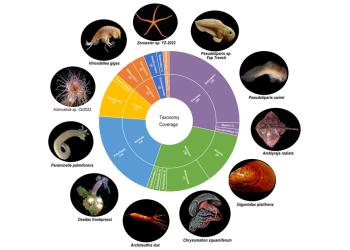HKUST Researchers Introduce Thermal-Electric Aerosol Printer to Make Piezoelectric Biofilms at Unprecedented Speed
A study led by the School of Engineering of the Hong Kong University of Science and Technology (HKUST) has developed a groundbreaking thermal-electric aerosol (TEA) printer that significantly accelerates piezoelectric biofilm manufacturing. Achieving a speed that is two orders of magnitude faster than existing technologies, this innovation paves the way for the industrial-scale production of biocompatible and biodegradable electronics, with medical applications such as ultrasonic energy harvesters for postoperative cardiac patients.
Piezoelectric biomaterials are materials that can generate electrical polarization in response to mechanical strains. Thanks to their remarkable electromechanical properties, biocompatibility, and bioresorbability, there has been a growing interest in their potential use in biomedical microelectromechanical systems, wearable and implantable electronics, and bio-tissue therapeutics. However, progress has long been hindered by the materials’ weak macroscopic piezoelectricity, poor mechanical properties, and difficulties in mass production.
Led by Professor YANG Zhengbao, Associate Professor in the Department of Mechanical and Aerospace Engineering at HKUST, the team recently achieved a significant breakthrough in collaboration with the City University of Hong Kong (CityU) and École Polytechnique Fédérale de Lausanne. They successfully developed a TEA bioprinter that enables the one-step, high-throughput, roll-to-roll manufacturing of piezoelectric biofilms by harnessing thermally-electrically triggered aerosols.
“Traditional biomolecular assembly methods often require extensive self-aligning time, typically as long as 48 hours. They also frequently create undesired structural defects because of the inability to simultaneously achieve a high speed and versatile manufacturing while allowing control of dimensions, structures, and functionality,” Prof. Yang explained, “Furthermore, the cost and complexity of the manufacturing process are prohibitive for large-scale production,” he added.
To overcome these limitations, the team used electric field force to manipulate aerosols, causing electric repulsion that prevents disruption to the nucleation process and ensures the deposition of aerosols onto substrates.
In their experiment, researchers constructed a 3D, roll-to-roll TEA printer using a printing nozzle panel, with nine nozzles connected to a power supply. Once a thermal-electric coupled field powerful enough to serve as a propellant was created, streams of ink would be shrunk and aerosolized onto a roll-to-roll platform, forming continuous thin films or micro patterns.
“Results showed that our TEA method, utilizing electrohydrodynamic aerosolizing and in-situ electrical poling, allows for ~8,600 mm printing length per day, which is two orders of magnitude faster than existing techniques,” Prof. Yang said.
“For eight decades since the discovery of biological piezoelectricity in wool and hair, there has been a huge gap between laboratory studies of piezoelectric biomaterials and the development of practical bio-devices. Our landmark research will open up a new avenue for industrial manufacturing of piezoelectric biofilms, which will, in turn, enable the production of miniaturized or flexible bioelectronics, wearable or implantable micro-devices, and bio-tissue therapeutics.”
This study demonstrates the great potential of piezoelectric biomaterials printed on the fly for use in bioelectronic devices. The paper has been published in the journal Science Advances, and subsequently selected by Nature Electronics as a research highlight. Its three co-first authors are HKUST postdoctoral fellow Dr. LI Xuemu, CityU PhD graduate Dr. ZHANG Zhuomin and PhD student ZHENG Yi.
For media inquiries, please contact:
Celia Lee
Tel: 2358 8982
Email: celialee@ust.hk
Dorothy Yip
Tel: 2358 5917
Email: egkkyip@ust.hk












